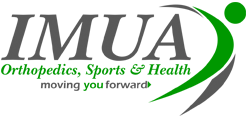Osteopathic medicine is founded on the following core principles: The human person is a completely united and integrated being of body, mind, and spirit. The natural state of the human person is health. The body contains intrinsic, complex, self-regulatory mechanisms that it utilizes to heal itself from injury. Dysfunction in any part of the system can lead to impacts on the body as a whole. Osteopathic medicine aims to approach treatment through the lens of these tenets.
My Osteopathic Mentor
My osteopathic mentor Edward Stiles, D.O. would always say, “if you ask different questions, you will arrive at different answers.” In medical school, there is a focused pursuit of learning a lot of information and getting the right answers on tests, on boards, on practical exams.
When I was a young medical student, it was easy to get trapped in this mentality of test performance, memorizing techniques and an algorithmic approach to seeing patients. Dr. Stiles, however, challenged me during my medical education to see the body as the unique, interconnected, dynamic system that it is. He would challenge me to see every patient from new angles, to see past their diagnosis or where their pain was.
Through the classic tenets of osteopathy, he trained me how to see new leverage points for healing.
Osteopathic Medicine
Osteopathic medicine was founded by Andrew Taylor Still, MD, DO in 1874. He was a practicing allopathic physician (MD) whose observations in traditional medicine led him to ask different questions.
Through his patient experiences, he questioned some of the normative practices of the time, noticing that many of the accepted treatments caused more toxicity or damage than benefit. His observant curiosity led him to diverge and become the founder of osteopathic medicine.
Osteopathic Medicine Core Principals
The resultant founding core principles of osteopathic medicine remain:
- The body is a unit; a person is a unit of body, mind, and spirit.
- The body is capable of self-regulation, self-healing, and health maintenance.
- Structure and function are reciprocally interrelated.
- Rational treatment is based upon an understanding of the basic principles of body unity, self-regulation, and the interrelationship of structure and function.
If you are feeling stuck with your current medical or musculoskeletal problem, I look forward to collaborating with you to find the leverage points in moving you forward on your path of healing.









